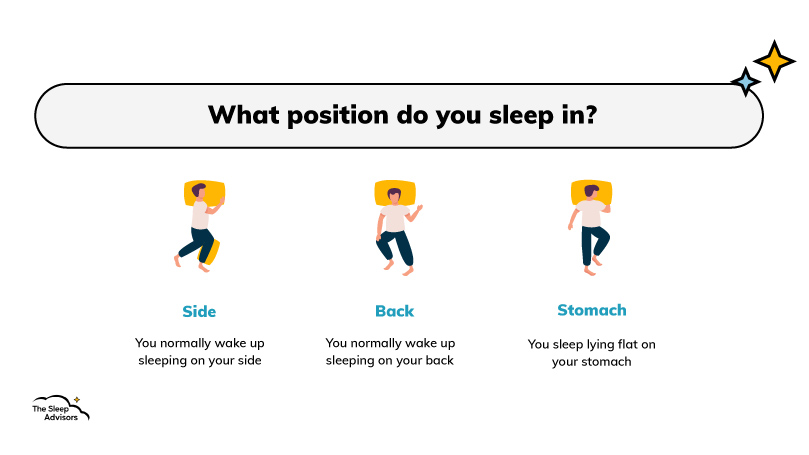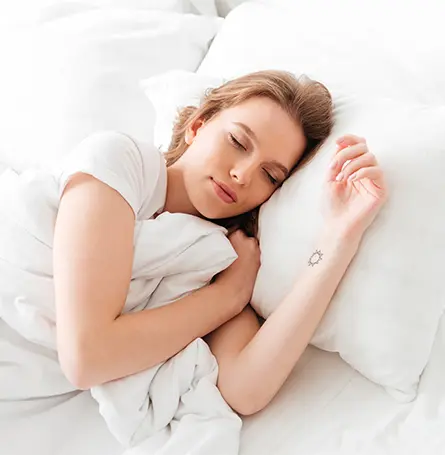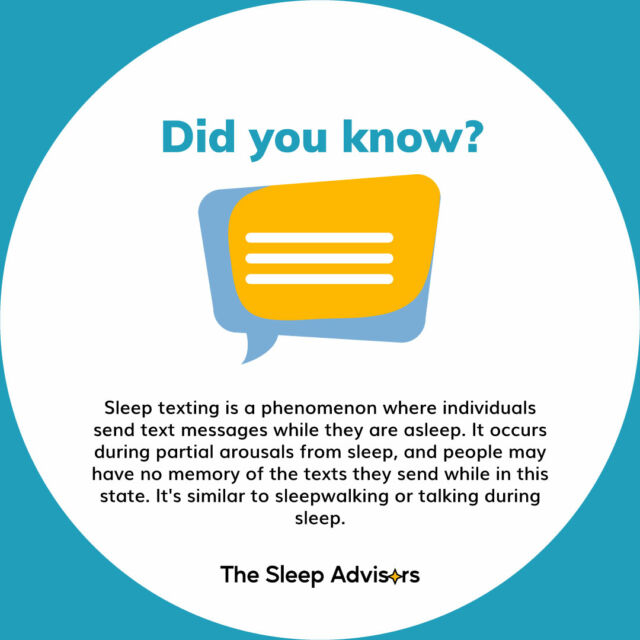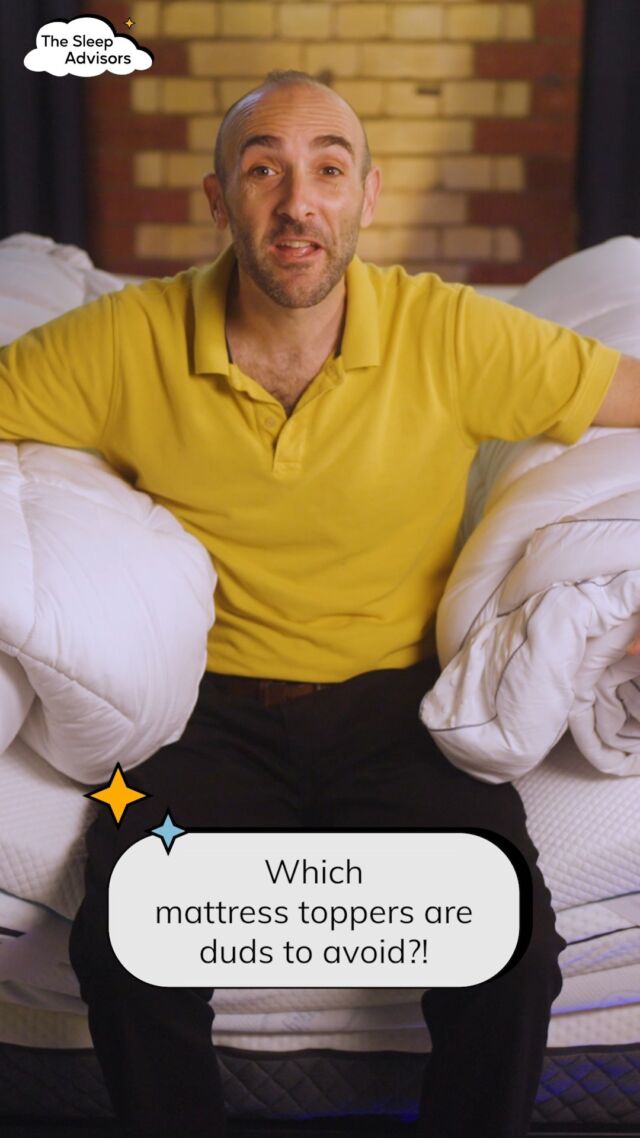Types of lower back pain

Alright, let's break down the back pain basics.
First up, we've got acute lower back pain – the sudden guest that crashes the party, usually after a wild move or lifting something heavy. It hits hard, like a sharp jab, and can throw your day off track.
Then there's chronic lower back pain – the long-term roommate that just won't leave. Hangs around for more than 12 weeks, playing the slow and steady game, making life a bit more complicated.
Sorting out these two types is key because they each need their own kind of TLC.
Acute pain might need a quick fix, while chronic pain demands a more thoughtful, long-haul approach for some serious relief.
Are sleep and lower back pain actually connected?
Yes, yes, yes!
Your sleep and the pain in your lower back are very connected!
Just think about it – how can you get a good night's sleep, if you are spending your nights tossing and turning in your bed? How can you get some rest and wake up feeling refreshed if you've just spent the entire night in certain sleeping positions that just made everything worse? You just don't!
Moreover, it goes both ways. If you're pulling all-nighters or just not catching enough Zs, it might be a sneaky contributor to your lower back pain. Experts think it could mess with the healing process, mess up your mood to crank up pain sensitivity, or even throw off the brain chemicals that play a role in how we feel pain.
Do sleeping positions affect lower back pain?
They do!
Your lumbar spine, the fancy term for the lower back's natural curve, likes things just right. Mess with it by snoozing in funky positions, and you're basically sending an invite for pain to crash the party.
The key? Find that sweet spot, a comfortable sleeping position that lets your lower back do its thing without waking up feeling like you've been in a wrestling match.

The best sleeping positions for lower back pain
So, how to find that sweet spot, that is, how to choose a sleep position that will give your lower back that much-needed pain relief?
Well, you have us to help you out with that. Here are some great sleeping positions for back pain:
1. Lying on your side (fetal position)
This posture aids in expanding the gap between your spinal vertebrae, reducing stress on your discs, and preventing the spine from arching backwards.
2. Lying on your back in a reclined position (with the help of an adjustable bed)
Leaning back assists in alleviating pressure on your spine and offers back support by establishing an angle between your upper body and thighs.
3. Lying on your side with a pillow supporting your knees
The essential element of this posture involves placing a pillow between your knees (preferably a thin pillow), which aids in minimizing lower back discomfort and maintaining correct spinal alignment.
4. Lying on your stomach with a pillow below your pelvis and lower abdomen
Individuals experiencing degenerative disc disease may find this sleeping posture particularly advantageous, as it can effectively alleviate the pressure on the intervertebral discs.
5. Lying flat on your back with a pillow underneath your knees
This posture supports the natural curve of the back, ensuring even distribution of body weight and alleviating stress on the lumbar spine, thanks to the assistance of a pillow.
As you can see, the best sleeping position, that is, the sleeping position that will help you improve your sleep quality (and forever say goodbye to sleep deprivation) is on your side! This position ensures proper alignment of all of your bones and muscles.
If you are a back sleeper, try using a small pillow underneath your knees. Some people also prefer using a rolled towel, so consider that too.
And, if you are one of the stomach sleepers, again, use a thinner pillow underneath your head and a thicker pillow under your hips and abdomen.
Sleep hygiene matters!

You can try all the tips and tricks on how to sleep with pain in your back, but, if you don't work on your sleep hygiene, all your efforts will be wasted. Even if you find the most comfortable sleeping position, you will, unfortunately, not be able to fall asleep if your sleep hygiene is not on point.
Thus, while choosing the right sleeping positions to help you relieve pain in your lower back (as well as doing all the things that your doctor recommended, things like taking pain medicine, for example), try including the following into your bedtime routine:
- Do some exercises before bed – but, be sure to talk to your doctor beforehand.
- Avoid alcohol and caffeine before bed – these will keep you up!
- Eliminate excess noise and light from your bedroom – noise and blue lights are known sleep disruptors.
- Set your bedroom to the right temperature – approximately 65 degrees Fahrenheit (18.3 degrees Celsius).
- Try some relaxation techniques – yoga or meditation, for example, can help you reduce stress before bed.
- Choose the right mattress – While some prefer to sleep on firm mattresses, other will always opt for a soft mattress. Try different mattresses out and choose one that will ensure proper spinal alignment and thus, reduce pain in your lower back and provide you with a night of better sleep.
When should you see a doctor

If persistent lower back pain during sleep starts to feel like an unwelcome nightly guest, it might be time to consider seeking professional advice.
While the occasional ache is normal, persistent discomfort that lasts for more than a few nights warrants attention.
If your lower back pain is causing nerve pain, limiting your day-to-day performance, or interfering with your overall well-being, it's wise to consult a doctor.
A healthcare professional can assess the situation, determine potential underlying causes, and recommend appropriate interventions.
In some cases, a doctor may refer you to a physical therapist who can design a tailored program of exercises and treatments to address the specific issues contributing to your nocturnal discomfort.
Conclusion
As you have seen, there are many things you can do to reduce lower back pain while you are sleeping – from choosing the right sleeping position to investing in the right bedding and changing a bit your lifestyle habits. Doing these things will not only help you with the pain but also improve your sleep quality – thus, make sure to give them a go.














There are no comments yet
"*" indicates required fields